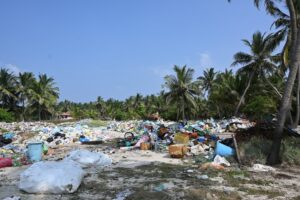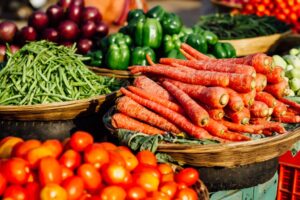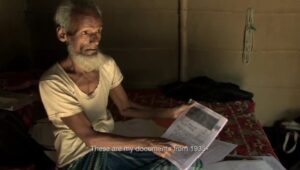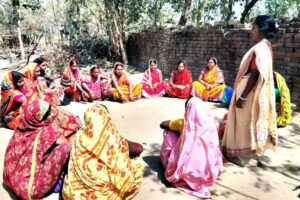How To Manage The Global Land Squeeze?
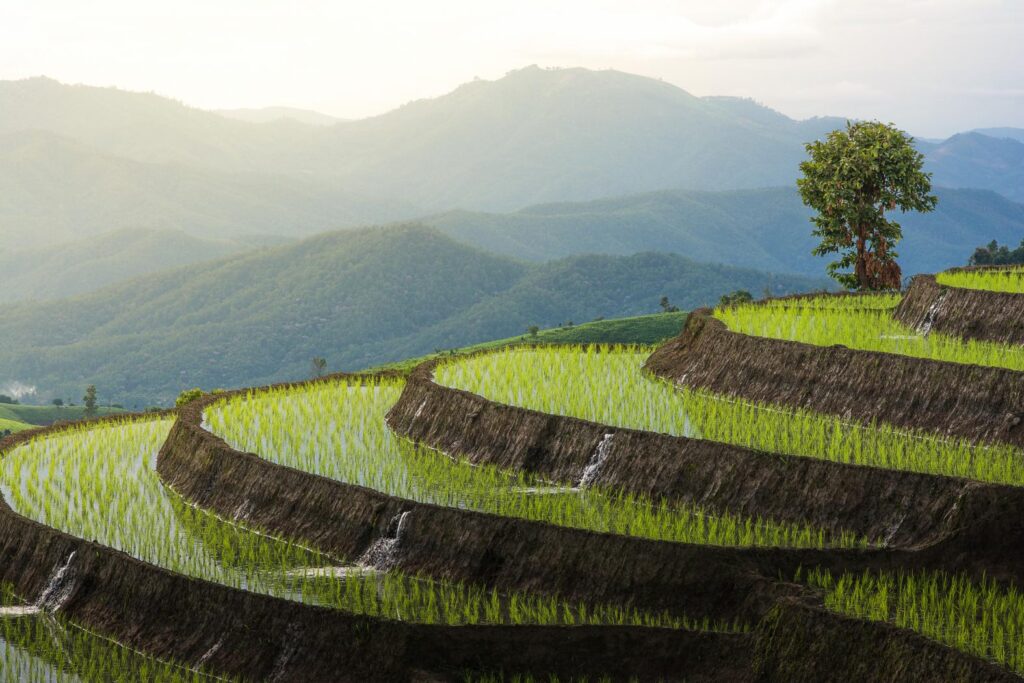
Terraced rice fields are seen within a mountain range (Photo by elbanco/Adobe Stock)
Rising population and demand for food, feed, fiber and fuel are increasing competition for land. For example, new WRI research projects that by 2050, an area of land nearly twice the size of India will be converted to agriculture, while an area the size of the continental United States will be needed to meet the world’s growing demand for wood. At the same time, as the Intergovernmental Panel on Climate Change (IPCC) noted, humanity needs to protect and restore land to fight climate change, prevent biodiversity loss and sustain other ecosystem service benefits that people depend upon from nature.
This squeeze would be less of an existential issue if land were infinite. But alas, it is not. As Mark Twain once quipped about land, “they’re not making it anymore.”
WRI recommends a four-part approach to address this land squeeze in a manner that is good for people, planet and prosperity for all. We call it “Produce-Protect-Reduce-Restore,” an integrated approach elaborated in our new report, The Global Land Squeeze: Managing the Growing Competition for Land.
Produce-Protect-Reduce-Restore can address land-use-related issues relevant to leaders from business, government and civil society. It has important implications for food security, climate change, biodiversity, equitable rural development, bio-energy, building materials and other demands on land.
This article explains the approach, suggests goals for each of its four pillars and identifies key actions needed to achieve them. Recognizing that the four pillars are interconnected, we conclude with cross-cutting considerations.
Understanding The Global Land Squeeze
The world’s vegetated land has a kaleidoscope of uses that fall into three broad categories:
- Production areas for human goods (such as food, feed, fiber and fuel).
- Lightly managed (or unmanaged) conservation areas and natural ecosystems (providing biodiversity protection, carbon sequestration, watershed protection, recreation and home for Indigenous Peoples).
- Heavily human-managed built environments (including cities, transport infrastructure, large dams and surface mining).
Production areas for human goods — croplands, pastures, managed forests and plantations — dwarf other land use categories.
Over the past 10,000 years, the human quest for food has been the largest driver of land use change, negatively affecting stored carbon and biodiversity through conversion of natural ecosystems into production areas. By one estimate, “worldwide agriculture has already cleared or converted 70% of grassland, 50% of savanna, 45% of the temperate deciduous forest and 27% of tropical forests.” Additionally, approximately 50% of the world’s wetlands have been drained for agriculture.
In other words, people have converted much of nature to meet their growing needs for food. Croplands and pasture occupy roughly half of all vegetated land today. Between 1962 and 2010, almost 500 million hectares (1.2 billion acres) of forests and woody savannas (an area two-thirds the size of Australia) were cleared globally for agriculture.
If not managed, the land squeeze will increase in the future, with corresponding implications for other land-use goals, as shown in the graphic below. Under a business-as-usual scenario, WRI projects that to feed a growing population, agricultural land is likely to expand by 600 million hectares — nearly twice the size of India — between 2010 and 2050. Wood demand is likely to grow as well, requiring harvesting an area of 800 million hectares of forest between 2010 and 2050, roughly the size of the continental United States. And cities will also expand by another 80 million hectares during that time.
Even as the world works to meet growing demand for food and other land-based products while housing an increasingly urban population, humanity will need to mitigate and adapt to climate change, protect biodiversity and empower Indigenous Peoples to continue to be stewards of their own lands.
All IPCC pathways for averting the worst impacts of climate change and limiting global warming to 1.5 degrees C (2.7 degrees F) above pre-industrial levels rely on dramatic reductions in natural ecosystem conversion, large-scale deployment of carbon dioxide removal measures via carbon storage on land and vegetation (or sequestration in geological reservoirs), and reduced demand for land dedicated to food, feed crops and pastures. Some scientists maintain that ending conversion and degradation of natural ecosystems and restoring large swaths of degraded areas to natural ecosystems are critical to achieving the world’s climate and biodiversity objectives. Expansion of agriculture, forestry and cities makes achieving these goals more difficult.
According to our research, projected agricultural expansion between 2010 and 2050 would use up 25–40% of the maximum carbon dioxide emissions “budget” for limiting warming to 1.5 degrees C–2 degrees C (2.7 degrees F-3.6 degrees F). Business-as-usual global wood harvests are projected to add 3.5 to 4.2 billion metric tons of greenhouse gases to the atmosphere annually over the coming decades — equivalent to roughly 10% of recent annual emissions of carbon dioxide. And urban expansion is projected to add another 0.7 billion metric tons of carbon dioxide equivalent during this time as well.
4 Pillars for Addressing the Global Land Squeeze
To manage society’s competing demands on the finite resource of land, the world simultaneously needs to:
- Produce more food, feed and fiber on existing agricultural lands and some working forests.
- Protect remaining natural and semi-natural ecosystems (e.g., primary forests, secondary forests, wetlands, grasslands) from conversion and degradation.
- Reduce projected growth in demand for land-intensive goods, particularly by high consumers.
- Restore degraded ecosystems and marginal agricultural land (with limited improvement potential) back to nature
(Published under a Creative Commons licence from World Resources Institute. Read the original article here)

